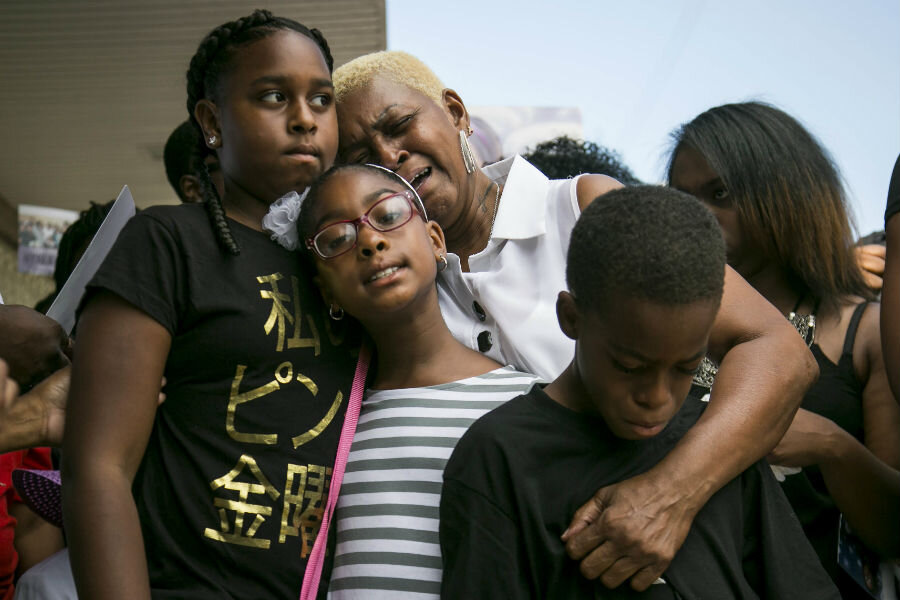How does Chicago’s violence compare to that of other US cities?
Loading...
After decades of declining violence, Chicago is once again living a moment of crisis – not just of rising violence, but also a loss of public confidence in their police, and of police morale.
Sixty-seven people were shot over the weekend, reported the Chicago Tribune on Monday, and 11 of the victims died. It’s an ignominious capstone to a tragic month: August has been the city’s most violent month since 1996, with 85 homicides.
One of the weekend’s murders drew particular attention nationally: that of Nykea Aldridge, cousin of NBA star Dwyane Wade. Ms. Aldridge was shot as she took her baby for a walk in her South Side neighborhood, an African-American-majority neighborhood that, together with the West Side, has borne the brunt of the violence, driven mainly by disputes between gangs.
The violence in Chicago this year dwarfs rates of other big cities in the United States. Thus far, the Windy City has seen 487 homicides recorded, compared to 222 in New York and 176 in Los Angeles. But dozens of other smaller cities have also seen a rise in violence this year, after a long and steady decline over the last few decades.
For many criminal-justice experts, the Chicago crisis is emblematic of what can happen when a police department with deeply tarnished credibility stops trying to prevent violence before it happens.
“There has been a decrease in the productivity of police” nationally, says Michael Jenkins, an assistant professor of sociology and criminal justice at the University of Scranton, who studied under “broken windows” theorist George Kelling. “Police are limiting the amount of stops of individuals in high-crime areas. I think in some cases for good reason, but it comes from crime control effects,” he tells The Christian Science Monitor.
Some authorities, such as Chicago Mayor Rahm Emanuel, who favor the aggressive use of police stops seen as racially discriminatory by civil-liberty and community groups in minority neighborhoods, have lamented what they describe variously as the “Ferguson,” “YouTube,” or “viral video” effect, in which officers “don’t want to be a news story themselves,” as Mr. Emanuel said in October 2015.
“We have allowed our police department to get fetal and it is having a direct consequence,” he said then, according to The Washington Post.
Others object to the implication that new evidence of police brutality, and the resultant public furor, restores any credibility to the sort of broken-windows tactics favored by Mr. Emanuel and some other big-city authorities.
“All those proactive actions – verbal insults, disrespect, other violations of people’s rights – they undermine” any decrease in crime achieved by their use, says Samuel Walker, emeritus professor of criminal justice at the University of Nebraska at Omaha.
In an interview with the Monitor, Dr. Walker points to how homicides in New York City have continued to fall even after a controversial stop-and-frisk program ended. “The police commissioner and mayor [at the time] claimed it had a deterrent effect. The minute they took it away, crime didn’t go up.”
One of the frustrations of Chicago, say both Walker and Jenkins, is that the city had begun to implement “focused deterrence” strategies touted as the most sophisticated for combating gun violence – an approach combining police investigatory capacities with social-service interventions designed to help potential victims and perpetrators of violence build alternatives.
Such strategies rely partly on some measure of community good will. That may be scarce in Chicago now, and getting scarcer. But the city’s police department is searching for a sustainable path forward.
“We’re still trying to find that balance between policing in our cities: the need for police to do so in procedurally just and fair ways, and make sure they’re not over-policing,” says Jenkins. “We’re at an in-between stage right now.”








